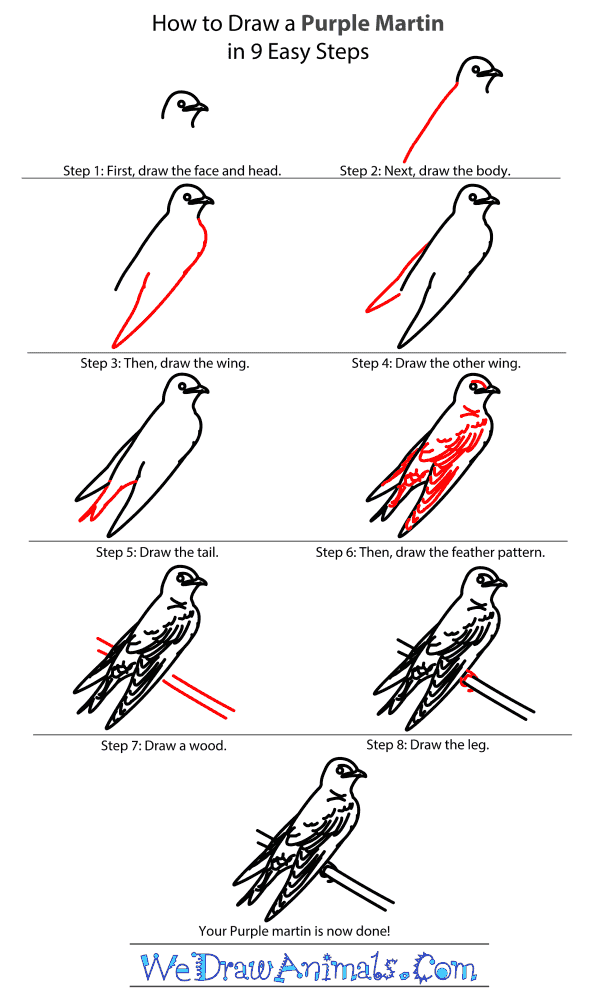In this quick tutorial you'll learn how to draw a Purple Martin in 8 easy steps - great for kids and novice artists.
The images above represent how your finished drawing is going to look and the steps involved.
Below are the individual steps - you can click on each one for a High Resolution printable PDF version.
At the bottom you can read some interesting facts about the Purple Martin.
Make sure you also check out any of the hundreds of drawing tutorials grouped by category.
How to Draw a Purple Martin - Step-by-Step Tutorial
Step 1: Start by drawing the head, beak, and eye. Make a small circle for the eye.
Step 2: Draw a line to make the back of the bird
Step 3: Draw the right wing in a long traingular shape
Step 4: Draw the left wing on the other side of the body the same as the first wing, but shorter
Step 5: Draw the tail between the two wings at the end of the body
Step 6: Draw the pattern of the feathers on the body by making straight and curved lines clustered together
Step 7: Draw two lines to make a perch. Make sure it is near the bottom of the bird
Step 8: Draw the foot with the toe going around the perch
Interesting Facts about the PURPLE MARTIN
The Purple Martin is a member of the bird family and the scientific term for them is Progne subis. They have a purplish color, especially the deep glossy sheen of the males, and they have a forked tail. They are the largest North American Swallow species. They are very fast and agile in the air, and can descend from a very high altitude. During the breeding season, they migrate throughout the western and eastern portion of the continent.
Did you know?
- The animal was first documented in 1758.
- They can reach up to almost 8 inches in length.
- The bird arrived in Europe during 2004.
- They had begun a population decline in the 20th Century.
- This species suffered a huge population decline in the 1980s.
The nests are made in holes, done by woodpeckers or sometimes humans who want to help. The Starling and the Sparrow fight the Marten for nesting sites. There is a Native American tradition to set out hollow gourds for nesting, and modern practices have extended to wood, aluminum, or even plastic structures. There is not many of these creatures, but they are the least concern for a possibility of extinction.









